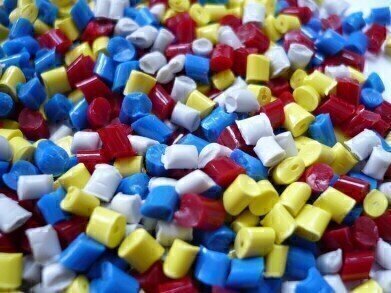Fuel for Thought
How Are Polymers Created?
Mar 31 2021
Polymers are naturally occurring substances composed of macromolecules, which are in turn made up of a multiple number of simple chemical units known as monomers. They are the building blocks which make up much organic matter, like the proteins, nucleic acids and cellulose in plants, trees and grasses, but they’re also present in minerals like quartz and diamond.
Additionally, synthetic polymers can also be artificially manufactured via chemical reactions, known as polymerisations. There are numerous forms which these reactions can take – far too many to enumerate here – but in general polymerisations fall into two categories: addition and condensation.
What is addition polymerisation?
Simple hydrocarbons like ethylene and propylene are easily transformed into polymers by adding one monomer to another in a chain that continues to lengthen. That’s because as another monomer joins the chain, it creates a new free radical which seeks yet another monomer to bond with, creating a cyclical process that can result in many thousands of monomers connected together.
Ethylene and propylene are in such high demand as gases due to their importance to the creation of polymers. Indeed, polyethylene – which can constitute a chain of up to 10,000 monomers – is a translucent and thermoplastic material that is often used to make plastic bottles, containers and packaging. Polypropylene, on the other hand, is harder than polyethylene (with up to 200,000 monomers in its chain) and is more commonly used in the textile industry.
What is condensation polymerisation?
Both of the aforementioned types of polymer are known as additions because every component of the ethylene and propylene are contained in the finished product. However, when a chemical reaction takes place which only uses one part of a monomer, it’s known as a condensation polymer. This can only occur if the monomers involved contain two or more reactive groups in order to successfully form a chain.
During this process, the hydrogen in one monomer combines with the oxygen in another monomer to create water (H2O), which is secreted as a by-product – hence the “condensation” appellation. Due to the monomer shedding part of its original constitution, the polymer will have less mass than the original monomers did before the reaction took place.
What are polymers used for?
As mentioned above, common applications of polymers include the manufacture of plastics like polyethylene and polypropylene, but there is a wide range of other applications, too. For example, they are often added to lubricants in order to alter their viscosity or shear stability and make them more suitable for certain purposes.
To ensure that the desired outcome is achieved every time, it’s important to assess the concentration of polymers in the lubricant after mixing. For those interested in this particular topic, the article Applications, Tests, and Measures of Viscosity Loss in Shear Stability of Multi-Grade, Polymer-Thickened Lubricants holds much useful information.
Digital Edition
PIN 25.1 Feb/March
March 2024
In This Edition Safety - The technology behind the ION Science Tiger XT - Safety with ammonia and LOHCs as hydrogen carriers Analytical Instrumentation - Discussion on new tribology te...
View all digital editions
Events
Apr 28 2024 Montreal, Quebec, Canada
Apr 30 2024 Birmingham, UK
May 03 2024 Seoul, South Korea
May 05 2024 Seville, Spain
May 06 2024 Riyadh, Saudi Arabia


















